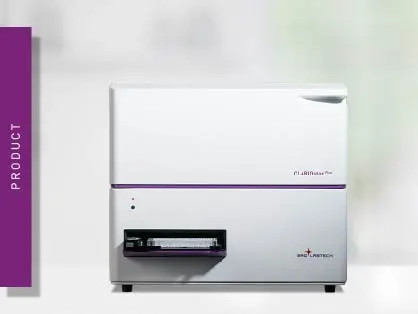
CLARIOstar Plus
Most flexible Plate Reader for Assay Development


The burden of cardiovascular disease is increasing across the world. Hear how simulating ischemia reperfusion injury in vitro can be used as a potential method for drug screening.
Speaker: Ben Allsop (Research Associate, Drug Discovery Group, University College London), Catherine Wark (Applications Manager, BMG LABTECH Ltd.)
Heart attacks are a major cause of death. Even though numbers are decreasing in western countries, an increase is observed in countries such as China, India, or Indonesia. A major mediator of cardiac damage during a heart attack is ischemia-reperfusion injury (IRI). Ischemia occurs when cells are deprived of oxygen and metabolic factors, e.g. when a blood vessel is blocked. When the blockage is broken up, oxygen-rich blood reperfuses vessels and cells and additionally damages the tissue. The ischemia period followed by reperfusion causes reactive oxygen species (ROS) generation and mitochondrial permeability transition pore opening, leading to apoptotic cell death and myocardial infarction. Ischemia-reperfusion research at University College London (UCL) has demonstrated that activation of the RISK (reperfusion injury salvage kinase) signalling pathway, by cell signalling molecules such as insulin, is protective against ischemia-reperfusion injury in in vitro studies and animal models.
Despite its pivotal disease role, current in vitro modeling of ischemia-reperfusion injury is poor. This is due to the difficulty of initiating, maintaining, and reversing an acute hypoxic insult whilst evaluating experimental outputs in vitro. To date, hypoxia chambers are used that are limited in throughput and endpoint measures. These limitations have led to the extensive use and over-reliance on animal models. The Langendorff preparation uses isolated mouse hearts to assess the consequences of ischemia-reperfusion. Here we describe a novel in vitro model of ischemia-reperfusion injury that enables multiplexed kinetic monitoring of cell death and intracellular O2. Subsequently, endpoint assays of cell viability, mitochondrial membrane potential, and ROS can be performed. The technique is based on a microplate reader with the ability to individually regulate oxygen and carbon dioxide levels in the measurement chamber. The CLARIOstar Plus with its unique atmospheric control unit (ACU) additionally ramps gas concentrations in the device which allows for quick gas changes. This way, ischemia-reperfusion gas changes can be mimicked in cell experiments in microplate format and their biological effects can be monitored simultaneously.
The kinetic monitoring has enabled the validation of insulin protection of ischemia-reperfusion injury. The protective effect of insulin was originally reported by a Langendorff experiment. The novel in vitro assay confirmed that cell death, monitored by CellTox Green, was reduced in the presence of insulin. Furthermore, additional biologic outcomes were measured and gave better insights into the protective effect of insulin. Reactive oxygen species measured by a fluorescent assay at the end of the experiment were reduced in the presence of insulin and may explain the reduced ischemia-reperfusion injury.
This microplate-reader-based assay is suitable for medium-throughput (96-well plates). Small molecule drugs can be screened for protection against ischemia-reperfusion injury. Employing cells such as iPSC-derived cardiomyocytes further enhances the relevance of the experiment and drastically reduces the demand for animal experiments. In contrast to conventional ischemia-reperfusion assays, the novel method adds the kinetic dimension and the monitoring of cellular events in real-time. The measurement of intracellular oxygenation using fluorescent probes indicates the time of when exactly cells experience ischemia or reperfusion. The possibility to combine several real-time assays in one well further links the oxygenation state to cellular outcomes such as cell death.
This tutorial will explain the methodology and assay formats used to study the effects of ischemia-reperfusion injury and will describe features of the CLARIOstar® and the newly released CLARIOstar®Plus microplate reader platforms that support these applications.

Most flexible Plate Reader for Assay Development